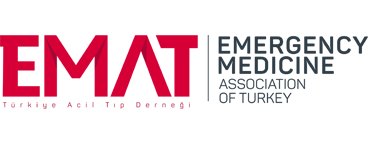Emergency department pain management in special populations
Katherine Vlasica1 , Amanda Hall1
, Amanda Hall1 , Mohammad Anzal Rehman2
, Mohammad Anzal Rehman2 , George Notas3
, George Notas3 , Christina Shenvi4
, Christina Shenvi4 , Sergey Motov5
, Sergey Motov5
1Department of Emergency Medicine, St. Joseph’s Health, Paterson, NJ, USA
2Department of Emergency Medicine, Mediclinic City Hospital, Dubai, UAE
3Department of Emergency Medicine, University Hospital of Heraklion, Crete, Greece
4Department of Emergency Medicine, University North Carolina Hospitals, Chapel Hill, NC, USA
5Department of Emergency Medicine, Maimonides Medical Center, Brooklyn, NY, USA
Keywords: Analgesia, emergency department, pain management
Abstract
Pain is a leading cause of emergency department (ED) visits globally, yet certain patient populations experience persistent disparities in their pain management due to physiological complexities, comorbidities, and gaps in evidence based guidelines. This clinical review focuses on individualized, evidence based approaches to ED pain management in four vulnerable groups: pregnant and breastfeeding patients, patients with sickle cell disease, geriatric populations, and patients with cancer pain and requiring palliative care. The practical recommendations presented in this review for optimal ED pain management in these special populations call for timely, effective, and multimodal analgesia; prioritization of nonpharmacologic and pain syndrome targeted techniques; awareness of drug disease and drug drug interactions; interdisciplinary coordination; and education to mitigate ED clinicians’ biases. This review emphasizes the importance of tailoring pain strategies to population specific needs to improve outcomes, reduce harm, and advance equity in emergency care delivery.
How to cite this article: Vlasica K, Hall A, Rehman MA, Notas G, Shenvi C, Motov S. Emergency department pain management in special populations. Turk J Emerg Med 2025;25:159-77.
KV: Writing original subchapter (lead); review and editing of the entire paper (equal). AH: Writing original subchapter (lead); review and editing of the entire paper (equal). AR: Writing original subchapter (lead); review and editing of the entire paper (equal). GN: Writing original subchapter (lead); review and editing of the entire paper (equal). CS: Writing original subchapter (lead); review and editing of the entire paper (equal). SM: Conceptualizing the entire paper (lead), review and editing of the entire paper (equal); preparing and editing the final draft (lead).
All authors made substantial contributions to the concept of the work, to manuscript preparation and revisions. All authors have approved the submitted version. All authors have agreed both to be personally accountable for the author’s own contributions and to ensure that questions related to the accuracy or integrity of any part of the work, even ones in which the author was not personally involved, are appropriately investigated, resolved, and the resolution documented in the literature.
None Declared.
None.

